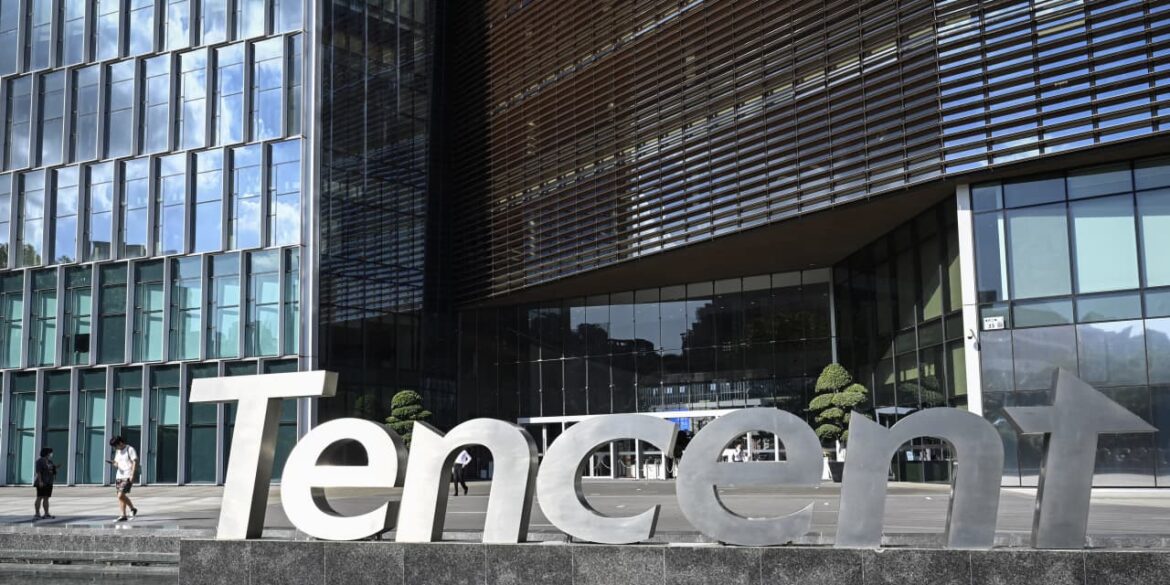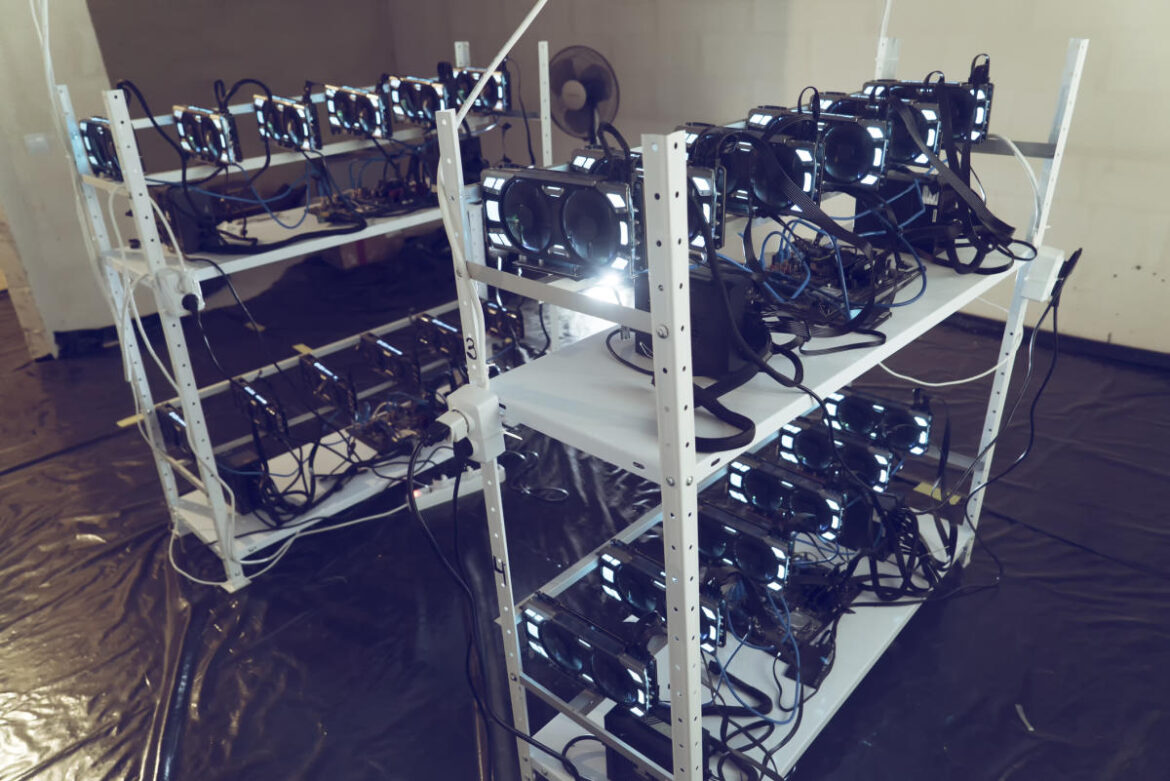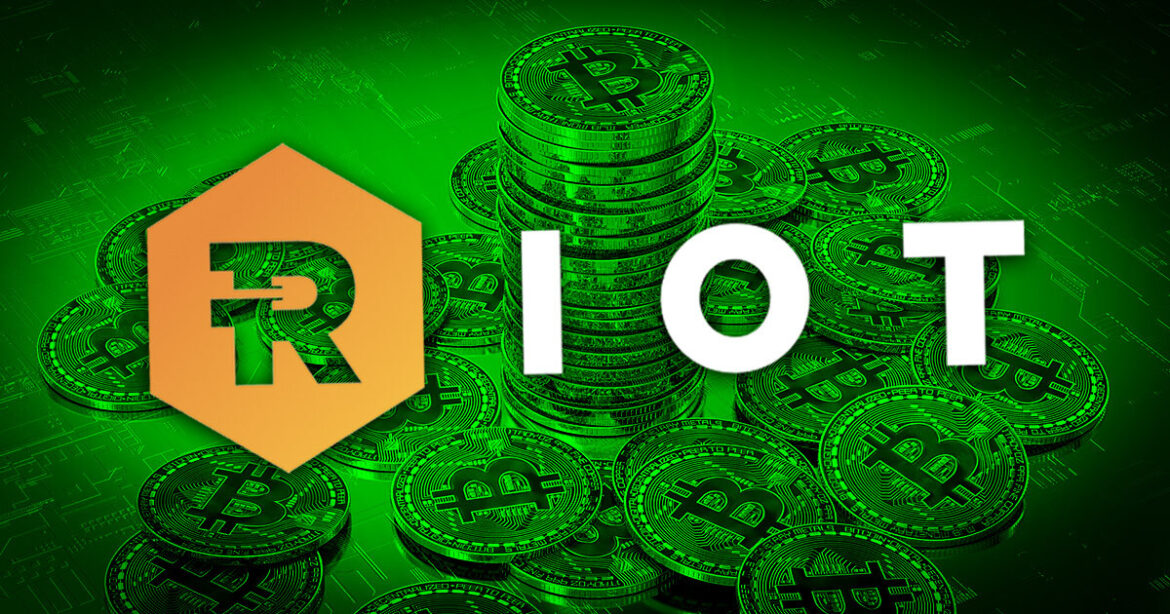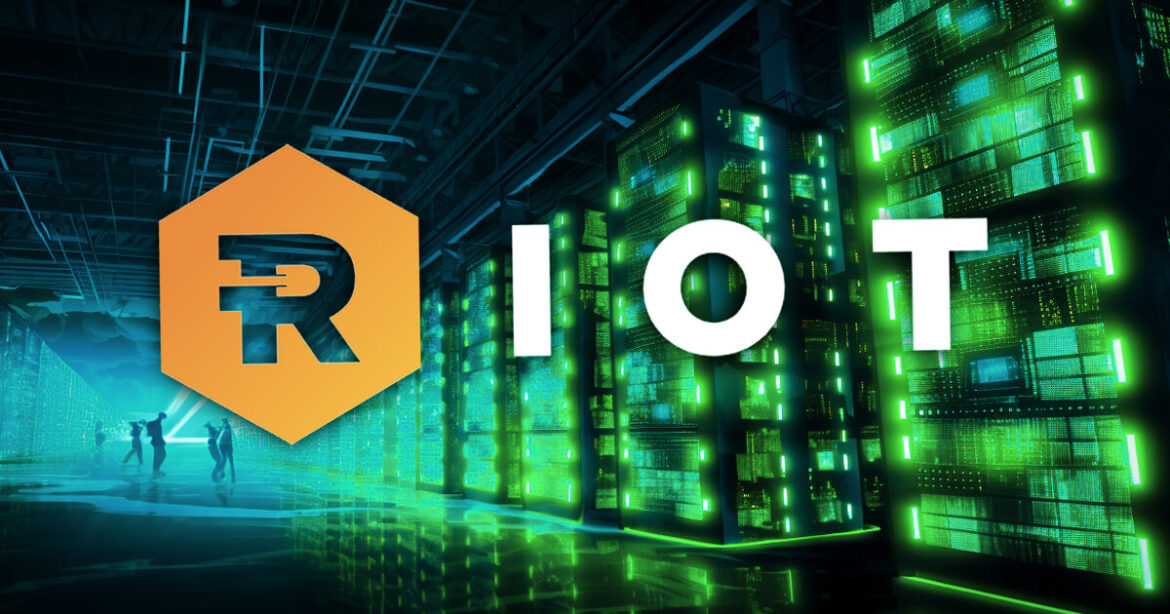 Bitcoin miner Riot Platforms Inc. said it expects to take delivery as well as deploy 31,500 Whatsminer M60S miners worth $97.4 million by the end of July 2024. The addition of the new bitcoin mining machines is projected to increase the “self-mining” hashrate capacity of Riot’s Rockdale Facility to 15.1 EH/s. Replacement of Underperforming Miners […]
Bitcoin miner Riot Platforms Inc. said it expects to take delivery as well as deploy 31,500 Whatsminer M60S miners worth $97.4 million by the end of July 2024. The addition of the new bitcoin mining machines is projected to increase the “self-mining” hashrate capacity of Riot’s Rockdale Facility to 15.1 EH/s. Replacement of Underperforming Miners […]
Source link
Riot
Riot Platforms Highlights Risks Associated With Upcoming Bitcoin Halving Event in Annual Report
 In its latest annual report, Riot Platforms, the publicly-listed bitcoin mining firm, outlines several significant risks that could impact its operations, including troubles in the broader crypto economy, potential decreases in onchain transaction fees, and the anticipated bitcoin halving event in April 2024. The company emphasizes the halving event’s potential to reduce mining rewards as […]
In its latest annual report, Riot Platforms, the publicly-listed bitcoin mining firm, outlines several significant risks that could impact its operations, including troubles in the broader crypto economy, potential decreases in onchain transaction fees, and the anticipated bitcoin halving event in April 2024. The company emphasizes the halving event’s potential to reduce mining rewards as […]
Source link
Tencent’s Riot Games to cut around 530 jobs, or 11% of its workforce

Videogame maker Riot Games on Monday said it would lay off around 530 employees globally, or around 11% of its total staff, as it tries to narrow its focus after making what executives said were several years of “big bets” and expansion.
In a letter to employees, the company — owned by Chinese tech giant Tencent Holdings
700,
and known for “League of Legends” — also said it was “sunsetting” its Riot Forge publishing unit and would cut the size of its “Legends of Runeterra” team.
The layoffs will occur over the next several weeks, the company said. Among other forms of assistance, Riot said it would offer a minimum of six months’ worth of salary for severance.
In the letter, Chief Executive Dylan Jadeja said that since 2019, Riot made “a number of big bets across the company” intended to serve gamers. As it expanded, adding games and staff, Riot doubled in size, accumulating multiple projects and higher costs along the way.
“Today, we’re a company without a sharp enough focus, and simply put, we have too many things underway,” he said. “Some of the significant investments we’ve made aren’t paying off the way we expected them to.”
“Our costs have grown to the point where they’re unsustainable, and we’ve left ourselves with no room for experimentation or failure — which is vital to a creative company like ours,” he continued. “All of this puts the core of our business at risk.”
Jadeja said the cuts were a necessity, and not done to “appease shareholders or to hit some quarterly earnings number.”
The moves come after the pandemic’s digital-demand boom gave way to a spike in prices for basic necessities in 2022, which left people with less room to spend on gaming. And amid shakiness in China’s economy, some of that country’s big tech companies — including Tencent — have ratcheted back investments, the South China Morning Post reported this month.
The layoffs, Jadeja said, followed hiring freezes and efforts to rein in costs. But he said those earlier changes, on their own, weren’t enough.
“We have to do more to focus our business and center our efforts on the things that drive the most player value — the things that are truly worth players’ time,” he said. “Unfortunately, this involves making changes in the area where we invest the most — our headcount.”
Why Marathon Digital, Riot Platforms, and Microstrategy Plunged Today
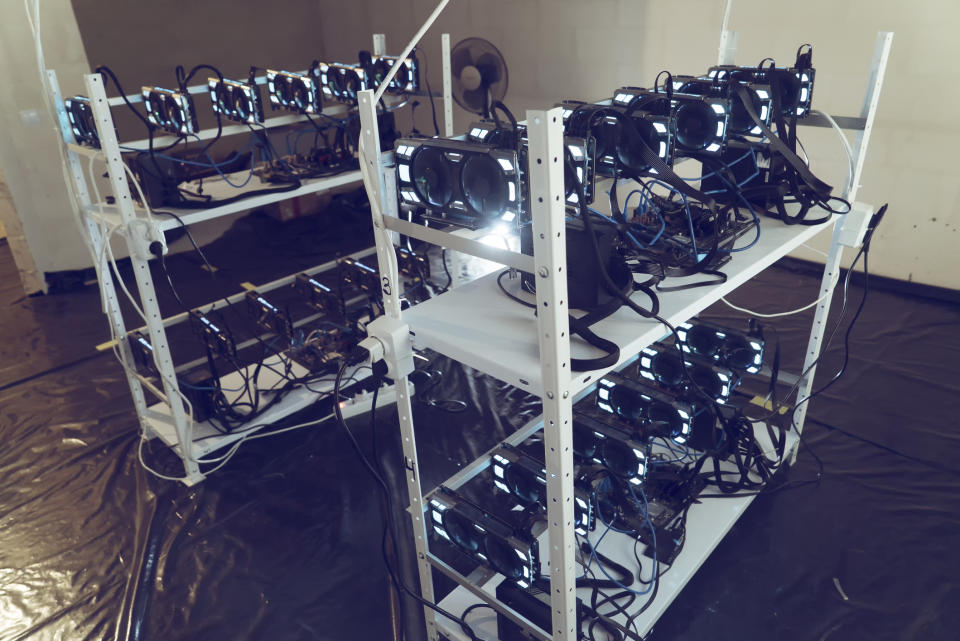
The impressive volatility we’ve seen in many top cryptocurrencies to kick off the year has been noted by many investors. However, results have been mixed for crypto-adjacent companies, with today’s moves in Marathon Digital (NASDAQ: MARA), Riot Platforms (NASDAQ: RIOT), and Microstrategy (NASDAQ: MSTR) reflecting a 7% downside move in Bitcoin (CRYPTO: BTC), which tends to drive the price action of these companies, given their large Bitcoin holdings. Notably, as of early afternoon trading, Bitcoin has plunged through the $44,000 level, generating significant long liquidations for traders and suggesting momentum is not on the side of investors right now.
As of 3 p.m. ET, shares of Marathon Digital, Riot Platforms, and Microstrategy dropped 15.1%, 9.7%, and 9.9%, respectively, over the past 24 hours. While lower Bitcoin prices do directly affect the valuations of these companies, there’s more at play with these stocks today.
Let’s dive into what’s driving this big downside move in these crypto-adjacent companies today.
The crypto-investing picture is changing
Undoubtedly, the biggest news affecting the crypto sector this week has been the approval of spot Bitcoin ETFs. These exchange-traded funds began trading on Thursday, providing new publicly traded options for investors looking to gain direct exposure to Bitcoin. Presumably, much of the demand for Bitcoin mining stocks was generated from investors who preferred the liquidity and publicly traded nature of these companies. With the rise of these ETFs, it’s likely many retail and institutional traders have repositioned their portfolios away from Bitcoin miners and into Bitcoin ETFs.
Fund flows will be an important story to watch, to be sure. It’s expected that around $100 billion of capital could flow into Bitcoin ETFs. That’s a large sum that has to come from somewhere.
Additionally, declining fees among Bitcoin ETF issuers has made these ETFs an attractive, low-cost option for those seeking exposure to the space. Instead of investing in higher-beta Bitcoin miners (their stock prices tend to move disproportionately to the upside and downside, based on Bitcoin swings), investors can gain direct exposure to what they’re after — Bitcoin. That’s a more attractive proposition for many investors concerned about capital preservation in this current climate.
What can change the narrative around these Bitcoin stocks?
It’s certainly the case that Bitcoin ETFs, as the new investment vehicle on the block, will continue to garner outsized interest from investors. To a certain extent, a sell-off among crypto-adjacent stocks may have already been anticipated by the market, considering the poor price performance of these companies prior to the approval of these ETFs on Wednesday. Accordingly, there’s some strong near-term price pressures that may manifest for some time.
Additionally, if it’s the case that these ETF approvals turn out to be a “sell the news” event, and Bitcoin prices trend lower, that’s not good for Bitcoin miners and companies like Microstrategy that really act as a vehicle to hold Bitcoin. With a halving event set to materialize in a few months, mining new Bitcoin will become more expensive. As a result, margin pressures and other factors are also at play.
In a word, these Bitcoin-adjacent stocks present a much more messy and potentially higher-volatility picture than owning Bitcoin ETFs directly. I think that while this sell-off in crypto stocks may be overdone, it can also be true that this selling pressure lasts longer than many think is possible. Thus, I’m going to remain on the sidelines for now when it comes to these specific stocks.
Should you invest $1,000 in Marathon Digital right now?
Before you buy stock in Marathon Digital, consider this:
The Motley Fool Stock Advisor analyst team just identified what they believe are the 10 best stocks for investors to buy now… and Marathon Digital wasn’t one of them. The 10 stocks that made the cut could produce monster returns in the coming years.
Stock Advisor provides investors with an easy-to-follow blueprint for success, including guidance on building a portfolio, regular updates from analysts, and two new stock picks each month. The Stock Advisor service has more than tripled the return of S&P 500 since 2002*.
*Stock Advisor returns as of January 8, 2024
Chris MacDonald has no position in any of the stocks mentioned. The Motley Fool has positions in and recommends Bitcoin. The Motley Fool has a disclosure policy.
Why Marathon Digital, Riot Platforms, and Microstrategy Plunged Today was originally published by The Motley Fool
Riot spends just $8.3k to mine 1 BTC as it looks to triple production by 2025
Riot, a key player in the Bitcoin mining sector, reported overall revenue of $76.7 million in its financial results for the quarter ending June 30, 2023.
This result underscores Bitcoin miner resilience in an unpredictable market, with a significant part of its achievement attributed to a 27% increase in Bitcoin production, as opposed to the value of Bitcoin itself.
Riot reduces the cost of BTC mining.
The company reduced the average cost to mine Bitcoin to $8,389 in Q2 2023 from $11,316 in Q2 2022. This is despite Bitcoin prices averaging lower at $28,024 per Bitcoin in Q2 2023, compared to $33,083 in Q2 2022.
Jason Les, CEO of Riot, said,
“Riot’s core business is Bitcoin mining, and the scale of our vertically integrated operations and financial strength allowed us to execute on our power strategy at unmatched scale this quarter.”
For instance, the company’s partnership with Midas Immersion is set to transform Riot’s Corsicana Facility into the largest and most advanced immersion cooling deployment for Bitcoin mining globally.
The company also announced a long-term purchase agreement with MicroBT, securing 33,280 next-generation miners “with an option to purchase an additional 66,560 miners on the same price and terms.” These new acquisitions are expected to add another 7.6 EH/s by mid-2024 and are designed specifically for immersion cooling while being manufactured in the United States.
Ultimately, the miner aims to increase its hash rate by 24.7 EHs to 35.4 EH/s by 2025 with the addition of the entire MicroBT miner order.

Offsetting BTC production with energy sales
In June 2023, Riot produced 460 Bitcoin, marking a decrease from the 757 Bitcoin mined in May 2023.
However, despite this reduction in mined Bitcoin and the subsequent drop in revenue, Riot employed its power strategy to generate significant revenue, approximately equivalent to $10 million. This strategy involved both power sales and demand response revenue, which together amounted to the equivalent of a “361 BTC” increase based on June’s average Bitcoin price.
Interestingly, June’s Bitcoin trading landscape saw most U.S. miners selling Bitcoin to capitalize on its price surge and secure profits. Riot, however, demonstrated prudence by selling only 400 Bitcoins, 33% less than the previous month. This decision reflects Riot’s confidence in its unique power strategy, which allowed the company to earn revenue without relying solely on Bitcoin sales.
During Texas’s June heatwave, Riot’s power strategy played a pivotal role. CEO Jason Les highlighted how the company made dynamic power usage decisions based on market indicators.
By actively participating in ERCOT’s various market programs, Riot generated $8.4 million in power sales and $1.6 million in demand response revenue. This strategic approach to power utilization not only provides Riot with a competitive advantage but also showcases its commitment to supporting the broader energy grid, especially during high-demand periods.
Navigating headwinds
Despite these positive strides, Riot has faced its share of challenges. A severe winter storm in Texas in Dec. 2022 caused significant damage to Building G, impacting the company’s hash rate growth. However, repairs are underway and expected to be completed by August, bringing the hash rate back to its full capacity.
A dip in revenue was reported from data center hosting, decreasing to $7.7 million from $9.8 million in the same period in 2022, and the quarter concluded with a net loss of $27.7 million, which, although significant, is substantially lower than the net loss of $353.6 million in Q2 2022.
The company’s Q2 2023 report presents a mixed bag of developments. While notable challenges such as a significant net loss and a decrease in Bitcoin’s average price did occur, Riot demonstrated resilience and a capacity for innovation.
Its strategic moves and partnerships and a strong emphasis on vertical integration imply a commitment to being a leader in Bitcoin mining technology and infrastructure.
Vanguard’s investments in Bitcoin mining firms Marathon, Riot approach $620M
Vanguard Group has increased its investment in the Bitcoin mining firms Marathon Digital Holdings and Riot Blockchain in two July 10 filings.
Vanguard now owns 17.5 million shares in Marathon. That number is shown in the line detailing the aggregate amount beneficially owned by each reporting person in a filing submitted to the U.S. Securities and Exchange Commission (SEC).
Another filing shows that Vanguard owns 17.9 million shares of Riot Blockchain, Marathon’s main competitor. Both filings were effective on June 30 but are dated July 10.
Reports from Fintel suggest that Vanguard now owns 10.31% of Marathon and 10.24% of Riot through its investments. Vanguard’s latest Marathon investment also represents a nearly 60% increase from February, when it held 10.97 million shares and 9.39% of the mining company. Its latest Riot investment represents an 18% increase since February, at which time Vanguard held 15.2 million shares and 9.09% of the company.
Marathon stock (MARA) is trading at 17.47, putting the value of Vanguard’s holdings at $305.73 million. RIOT stock is trading at 17.28, putting the value of Vanguard’s holdings at $313.97 million. Together, those investments represent a stake in two leading Bitcoin mining firms and are worth a combined $619.7 million.
Vanguard has little other interest in crypto
Vanguard is currently the second largest asset manager in the world, with $8.1 trillion of assets under management (AUM) as of 2022.
Despite its focus on providing exchange-traded funds, Vanguard did not apply for a spot Bitcoin ETF fund alongside BlackRock and Fidelity in June.
The company has also discouraged direct crypto investments. In May 2022, Vanguard CIO Greg Davis described cryptocurrency as a speculative asset without intrinsic value and not a “great way to construct a long-term portfolio for clients.” Davis noted, however, that the company does use blockchain technology to retrieve index data.
The company published a more general statement in April 2022, warning of price volatility and high commission rates as well as the speculative nature of crypto.
The post Vanguard’s investments in Bitcoin mining firms Marathon, Riot approach $620M appeared first on CryptoSlate.
Riot leverages Texas power strategy to fund operations as BTC balance increases

Riot Platforms, Inc. recently reported its June 2023 Bitcoin mining performance, revealing that it produced 460 Bitcoin while executing an effective power strategy.
The mining firm produced 40% fewer Bitcoin in June, mining just 460 BTC compared to 757 BTC in May.
| Metric | June 2023 | May 2023 | June 2022 | Month/Month | Year/Year |
|---|---|---|---|---|---|
| Bitcoin Produced | 460 | 676 | 421 | -32% | 9% |
| Average Bitcoin Produced per Day | 15.3 | 21.8 | 14.0 | -30% | 9% |
| Bitcoin Held | 7,250 | 7,190 | 6,654 | 1% | 9% |
| Bitcoin Sold | 400 | 600 | 300 | -33% | 33% |
| Bitcoin Sales – Net Proceeds | $10.6 million | $16.5 million | $6.2 million | -36% | 71% |
| Average Net Price per Bitcoin Sold | $26,456 | $27,568 | $20,627 | -4% | 28% |
| Deployed Hash Rate | 10.7 EH/s | 10.5 EH/s | 4.4 EH/s | 2% | 143% |
| Deployed Miners | 95,904 | 94,176 | 42,455 | 2% | 126% |
| Power Sales | $8.4 million | $0.5 million | $1.9 million | 1,452% | 338% |
| Demand Response Revenue | $1.6 million | $2.3 million | $0.7 million | -29% | 137% |
Source: Riot
Despite the drop in sales, Riot was able to leverage its power strategy to generate substantial revenue equivalent to $10 million in revenue. As a result, the combined power sales and demand response revenue equated to an equivalent of a “361 BTC” increase based on the average price of Bitcoin during the month.
Jason Les, CEO of Riot, commented,
“June was a momentous month for Riot, as the results from our mining operations, power strategy and growth plans have all come together.
We announced an initial order of 33,280 MicroBT miners for our Corsicana Facility, which is expected to add 7.6 EH/s to our self-mining fleet and also provides optionality for future orders at the same terms.”
The additional MicroBT miners would increase Riot’s hash rate by 71%, given the current reported figure of 10.7 EH/s.
Bitcoin miners are selling BTC.
The news comes as other U.S. miners looked to capitalize on BTC’s recent price surge to secure profits. In June, BTC mostly traded above $25,000, peaking at $30,750.
According to Glassnode data analyzed by CryptoSlate, Bitcoin miners sold a notable amount of their mined Bitcoin in June to fund their operations. Data shows that Bitcoin miners’ exchange flow peaked at 4,710 BTC on June 20, marking the highest rate in the past five years.
| MINER | BITCOIN PRODUCED | BITCOIN SOLD | PERCENTAGE SOLD | BTC HOLDINGS | TOTAL HOLDINGS SOLD |
|---|---|---|---|---|---|
| Riot | 460 BTC | 400 BTC | 87% | 7,250 BTC | 5.52% |
| Marathon Digital | 979 BTC | 700 BTC | 71.5% | 12,538 BTC | 5.58% |
| Hut 8 | 70 BTC | 217 BTC | 310%* | 9,136 BTC | 2.38% |
| Cleanspark | 491 BTC | 413 BTC | 84% | 529 BTC | 78.07% |
June BTC Miner Activity
*(Based on June Production)
Comparatively, Riot sold fewer Bitcoins monthly as the company reported a sale of 400 Bitcoins in June 2023, a decrease of 33% from May 2023.
Riot’s power strategy
However, Riot’s unique power strategy allowed the company to maintain a “competitive edge” and contribute meaningfully to the broader energy grid during Texas’s June heatwave without relying solely on Bitcoin sales for revenue. Les explained,
“As temperatures in Texas reached near record levels during the month and power demand was high, we made dynamic decisions on our power usage based on market signals.
Through our participation in various market programs within ERCOT, the Company generated $8.4 million in power sales and $1.6 million in demand response revenue.”
According to Riot, the power strategy involves participation in ERCOT’s ancillary services and the Four Coincident Peak (4CP) program. The company effectively uses these services to balance electricity supply and demand, even during peak periods.
Riot then sells access to electrical load to ERCOT and receives compensation regardless of whether ERCOT requires a power down. Through the 4CP program, Riot voluntarily reduces power usage during peak periods and, in return, receives credits for future transmission costs.
The flexibility of its long-term Power Purchase Agreement allows Riot to sell power back to the market when it’s more profitable than mining Bitcoin.



